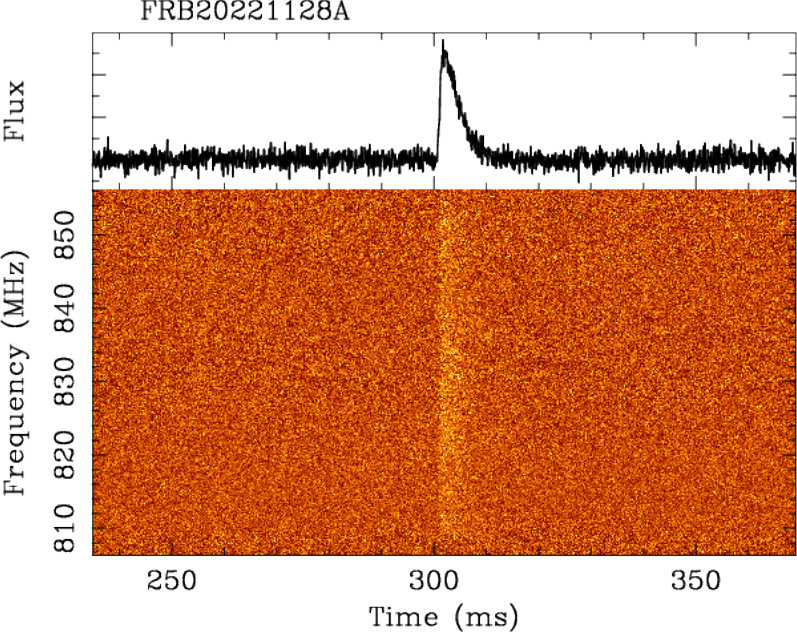
The UTMOST-2D project has found its first Fast Radio Burst using the Molonglo Radio Telescope.
Fast Radio Bursts are very bright, millisecond time-scale flashes of radio energy that take place every few minutes randomly on the sky. Their origin is one of the most exciting mysteries in astrophysics.
UTMOST-2D is a project to revamp half of the Molonglo Radio telescope to detect FRBs. Molonglo consists of two 1-mile long arms in a flat valley near Canberra in Australia, ideal for detecting radio waves from space and pinpointing their origins. The North-South aligned arm has been refitted with all new hardware over the last 3 years, and has been searching 24/7 for FRBs for the last 18 months, as part of the PhD project of Swinburne University of Technology Centre for Astrophysics and Supercomputing student Ayushi Mandlik.
The Fast Radio Burst is named FRB20221128A, after its discovery date. The pulse is shown below as a function of observing frequency and time — it lasted about 5.5 milliseconds as a bright flash from an otherwise quiet sky.
The event has been announced as an Astronomer’s Telegram — link.
7 thoughts on “Upgraded UTMOST finds its first Fast Radio Burst”
Comments are closed.